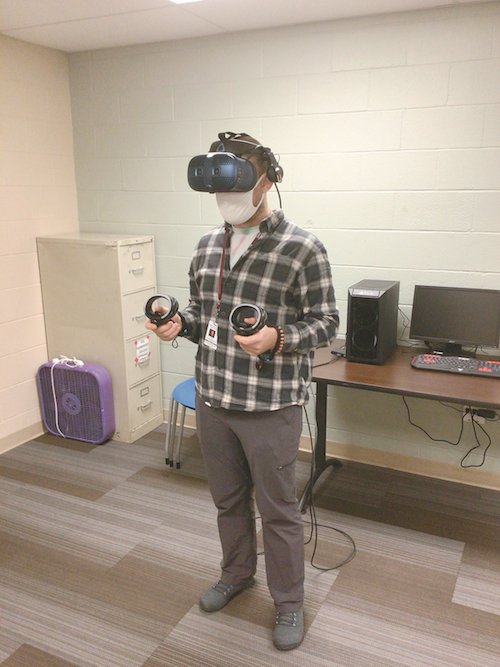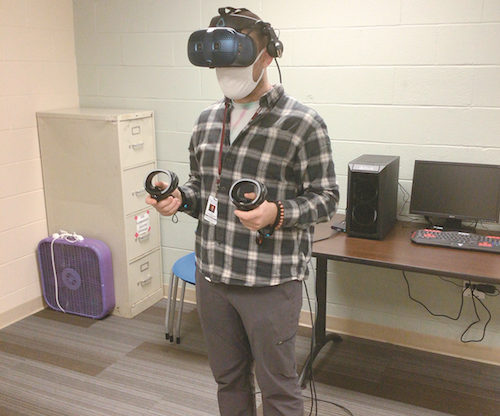Gorham High School (GHS) has begun to look for ways to implement virtual reality (VR) into their everyday learning. Stephanie Ramonas, a teacher at GHS, is among the first to try it out in her classroom.
Ramonas has been using a VR headset with her students. The headset allows students to enter a virtual space to interact with their surroundings and explore places they have never been before.
“You put the headset on and you go into a virtual world,” said Ramonas. “You feel like you are inside the game. You cannot see ‘reality’ anymore.”
According to Ramonas, once a student puts the headset on, everything around them disappears and they see what the VR shows them. When wearing the headset, the student also holds two controllers that show up as hands in the virtual world. As they turn their head, the VR turns and allows them to see things behind them or on the sides.
Virtual reality can be used for a number of different learning purposes in school. As classes are unable to go on field trips this year due to COVID-19 restrictions, VR will hopefully be used for job/work simulations. This will help students make decisions on post-secondary options and receive interactive experience.
Additionally, VR is being paired with academic work. For example, if a student is learning about historical buildings or sites, virtual reality will allow them to “travel” to this place. This way, they can view it from a first-person perspective rather than simply looking at a picture in a textbook.

Cooper Power, a teacher at Gorham High School, is pictured wearing the new virtual reality headset.
“Virtual reality can make learning more engaging by pairing the VR with book work,” Ramonas said. “The student can learn about geography in class and then put the VR on and go anywhere with the Google Earth app; they can stand on top of Mount Everest or be in the Sahara Desert.”
Ramonas said she has found great success with virtual reality. She is in the process of purchasing more apps for the headset in order to expand possibilities, engage students in hands-on ways, and bring new excitement to learning.
The VR headset was purchased using funds for the MELMAC Education Foundation that sponsors the Aspire Gorham initiative and is responsible for bringing virtual reality to GHS. Using funds from this grant, GHS is hoping to grow their VR system and introduce it to other classrooms throughout the school.
While Ramonas is the first to try out the VR system, the countless benefits she has found from it make it clear she will not be the last. Virtual reality can become a learning tool in many different classrooms to reach any student looking for engaging, exciting, and firsthand experiences.


